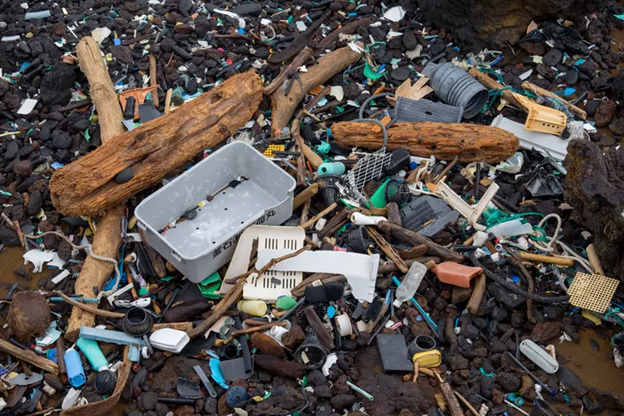The quest for a more sustainable future has never been more urgent. Our current pathway, marked by rising global temperatures, depleting resources, and diminishing biodiversity, makes it important to create a shift in how we treat our planet. The pressing environmental issues, potential solutions, and actions for fostering sustainability are crucial for inspiring a collective effort toward a more sustainable future. By weaving together these elements, we aim to inspire a collective effort towards a more sustainable future.
Understanding the Challenges
The pressing nature of environmental degradation requires a clear understanding of the specific challenges we face. Climate change stands as a predominant issue, driven largely by greenhouse gas emissions from fossil fuels. This has led to increasingly severe weather events, such as hurricanes and heat waves. For example, the 2020 Atlantic hurricane season set a record with 30 named storms, underscoring the intensified impact of climate change on weather patterns. The main reason that the season set a record was due to the unusually warm ocean temperatures, further supporting how climate change is affecting our world.
Resource depletion further compounds the problem. Overfishing has drastically reduced fish populations, with the United Nations reporting that 33% of global fish stocks are overexploited. Similarly, deforestation continues unabated, leading to the loss of critical habitats and the acceleration of climate change. The Ogallala Aquifer, a vital water source in the U.S. Great Plains, is being depleted at an unsustainable rate, threatening agriculture and water availability.
Biodiversity loss is another concern. Habitat destruction, pollution, and climate change have contributed to a dramatic decline in species. The International Union for Conservation of Nature (IUCN) has listed nearly 30% of assessed species as threatened with extinction. The decline in bee populations, essential for pollination, is a stark example of how interconnected ecosystems are being disrupted.
Innovative Solutions for a Sustainable Future
Despite these challenges, innovative solutions are emerging that offer hope for a more sustainable future. One significant area of progress is in renewable energy. Advances in solar, wind, and geothermal technologies are reshaping the energy landscape. Germany's Energiewende policy, for instance, has successfully increased the share of renewables in its energy mix to over 40%, demonstrating how policy and technology can drive significant change.

An interview with Christin Powell provided the perspective of a climate solution of collecting plastic from the Earth and reusing it, initially making more sustainable products. Powell remarks that as long as you keep practicing sustainability in your life the size of the effect it has does not matter.“Sustainability can come in all forms. It helps the Earth either way.” Christin owns the skincare company Kinship which focuses on clean skincare. “Many companies don’t keep in mind how much plastic and waste is resulting in many beauty products,” she remarks. Like Kinship, the concept of a circular economy, where products are designed for reuse and recycling, is gaining traction. Companies like Patagonia have pioneered this approach by encouraging product repairs and recycling, thus extending the life cycle of their goods and minimizing waste. This model not only reduces environmental impact but also promotes a more sustainable consumer culture.
Empowering Individuals and Communities
Beyond technological advancements, individual and community actions play a crucial role in promoting sustainability. On a personal level, making informed choices can significantly impact the environment. Reducing meat consumption, using public transport, and supporting eco-friendly products are practical steps individuals can take to lower their carbon footprint. For example, choosing plant-based foods not only reduces greenhouse gas emissions but also conserves water and land resources. Not eating meat reduces greenhouse gasses as the process of raising livestock and produce the food produces tons of methane, carbon, and more.
Community initiatives further amplify the impact of individual actions. Local clean-up drives, urban green spaces, and community gardens foster environmental stewardship and create more sustainable living environments. Companies like The Nature Conservancy have led many community-centered actions, including when a 236,000-acre section of rainforest in Belize recently went up for sale, TNC and partners stepped up to purchase it, protecting it from being cleared for large-scale farming. With this project TNC made sure to build strong ties with neighboring communities to keep the forest in check and also educate others on conservation. This ultimately demonstrates how collective efforts can enhance local resilience and promote sustainability.
A Collective Path Forward
The journey towards a more sustainable future is both challenging and promising. By understanding the gravity of environmental issues and embracing innovative solutions, we can address the critical problems of climate change, resource depletion, and biodiversity loss. Empowering individuals and communities with practical actions, while also fostering a collective commitment to sustainability, are essential steps in this transformative process.
As we move forward, it is crucial to view sustainability not merely as a set of obligations but as an opportunity for innovation and positive change. By integrating effective solutions and taking concerted action, we can build a future that is not only sustainable but also thriving for generations to come. The path to a sustainable future is one we can navigate together, guided by hope, innovation, and a shared commitment to our planet.



